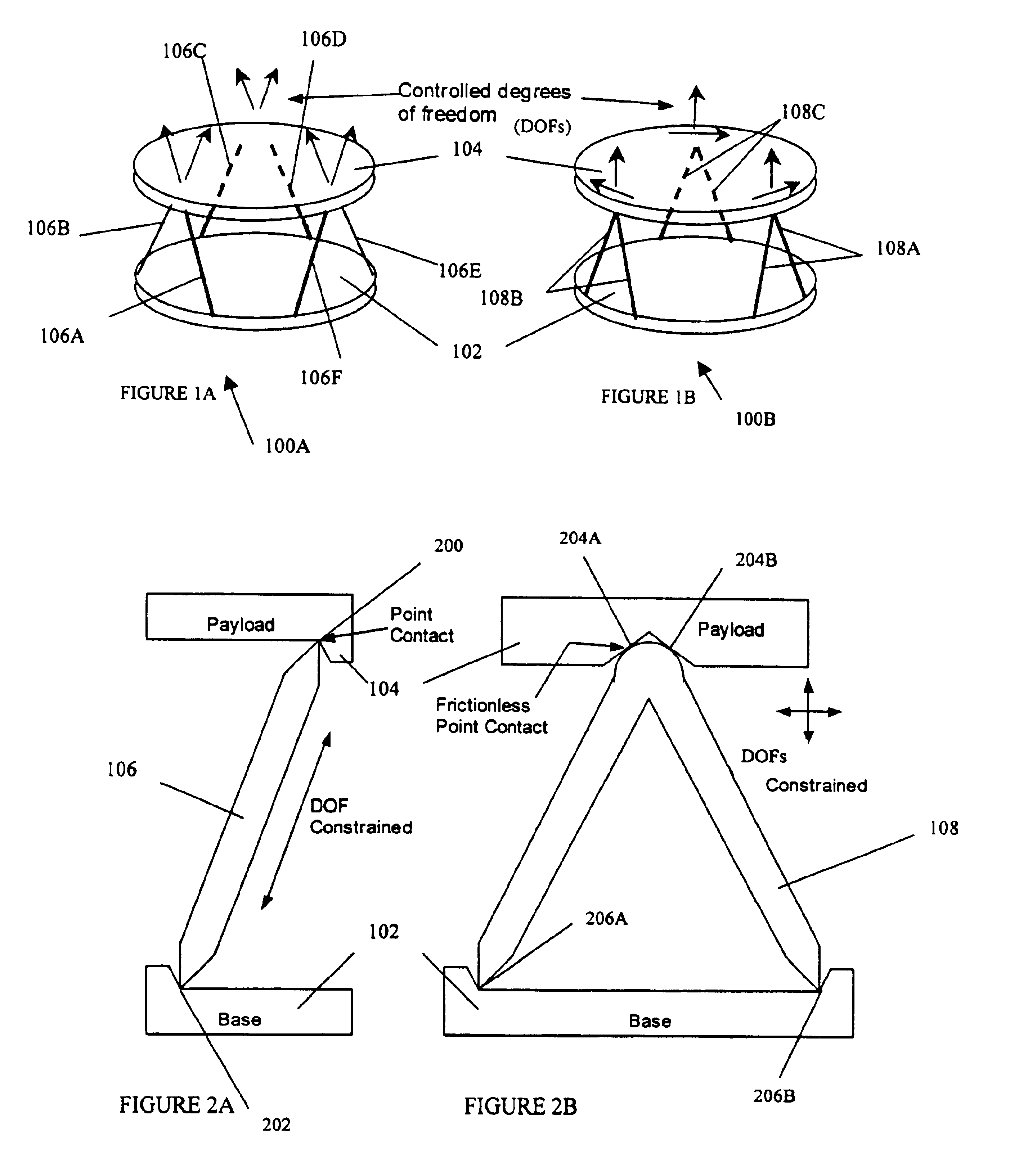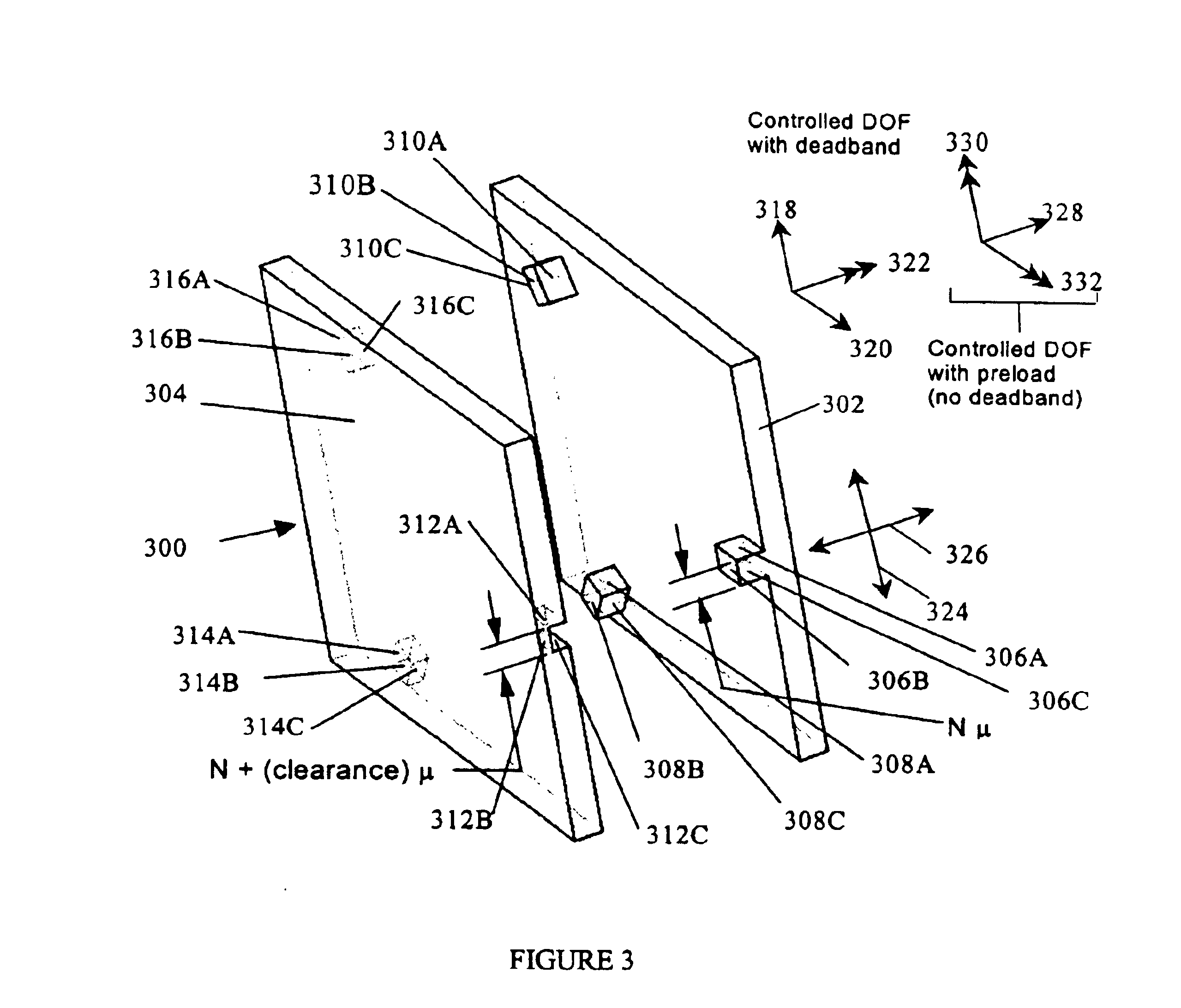Base, payload and connecting structure and methods of making the same
a technology of base, payload and connecting structure, applied in the field of optical devices, can solve the problems of often failing to align optical components with high intrinsic precision, and achieve the effects of reducing stiffness, high intrinsic precision, and high accuracy
- Summary
- Abstract
- Description
- Claims
- Application Information
AI Technical Summary
Benefits of technology
Problems solved by technology
Method used
Image
Examples
Embodiment Construction
FIG. 1A is a three-dimensional schematic view of one kinematic support configuration 100A. The kinematic support configuration 100A in FIG. 1A comprises a base assembly 102, a payload assembly 104 and six monopod connecting elements 106A-106F (individually or collectively referred to herein as “monopod connecting element 106”). In one configuration, the base assembly 102 is a base support structure, and the payload assembly 104 holds or aligns an optical element, such as an optical fiber, lens or mirror. The base assembly 102 is connected to the payload assembly 104 via the six monopod connecting elements 106A-106F.
Each monopod connecting element 106 in FIG. 1A constrains one degree of freedom (hereinafter referred to as ‘DOF’) between the base assembly 102 and the payload assembly 104, as shown by an arrow above the kinematic support configuration 100A in FIG. 1A. A constrained DOF may be referred to as a ‘stiff’ DOF or a restrained DOF. The relevant reference parameter for transla...
PUM
 Login to View More
Login to View More Abstract
Description
Claims
Application Information
 Login to View More
Login to View More - R&D
- Intellectual Property
- Life Sciences
- Materials
- Tech Scout
- Unparalleled Data Quality
- Higher Quality Content
- 60% Fewer Hallucinations
Browse by: Latest US Patents, China's latest patents, Technical Efficacy Thesaurus, Application Domain, Technology Topic, Popular Technical Reports.
© 2025 PatSnap. All rights reserved.Legal|Privacy policy|Modern Slavery Act Transparency Statement|Sitemap|About US| Contact US: help@patsnap.com



